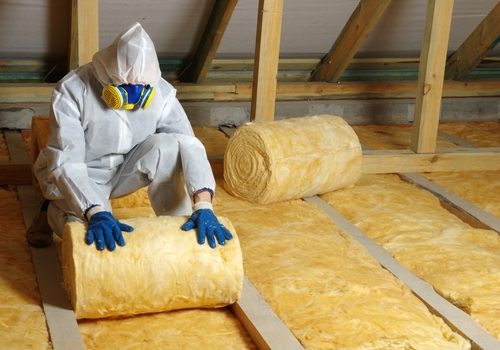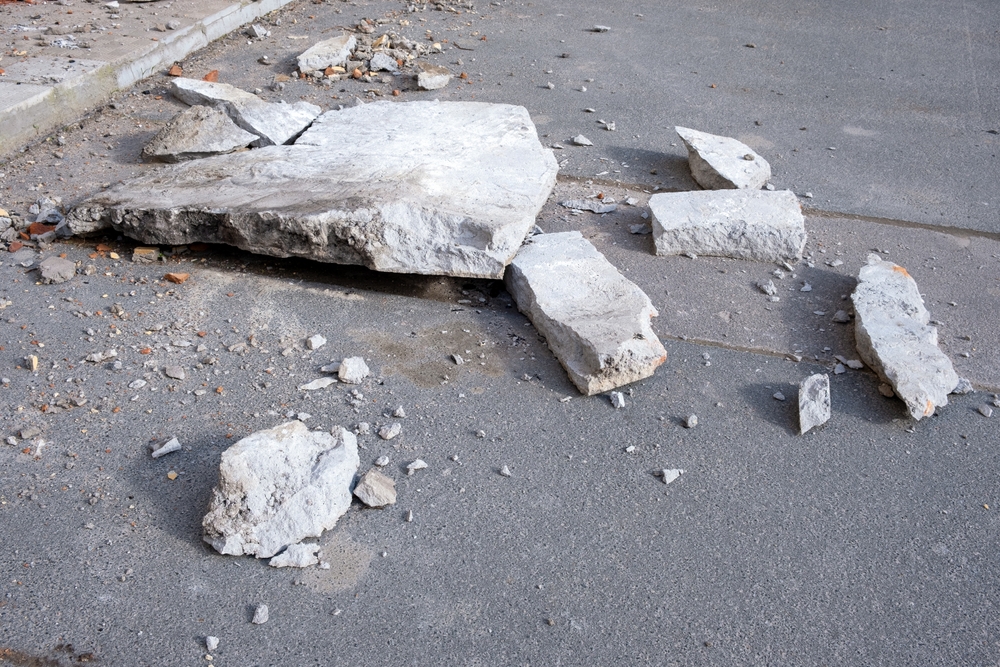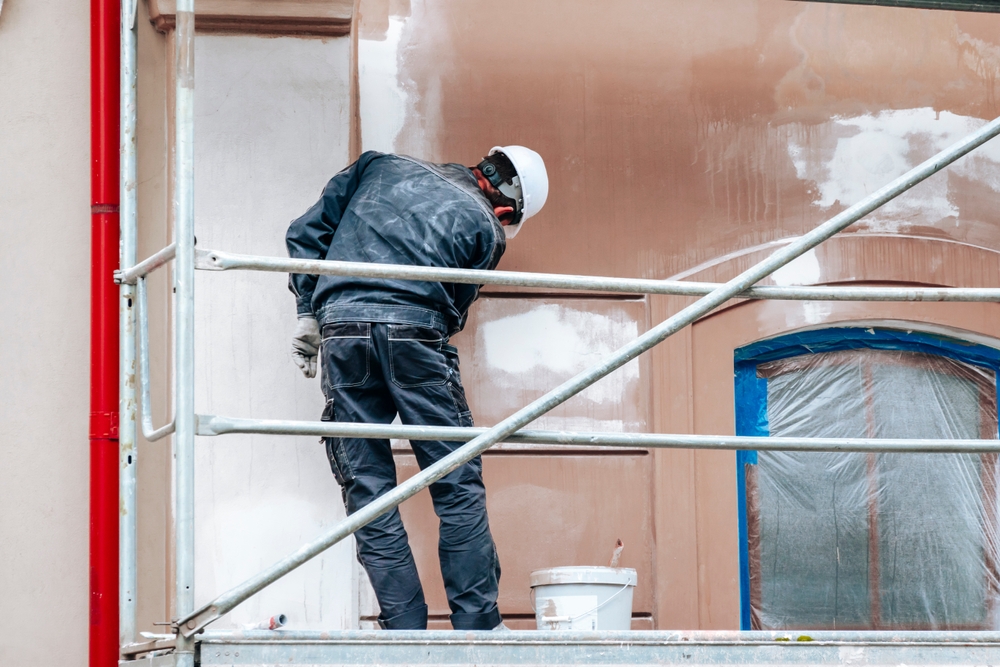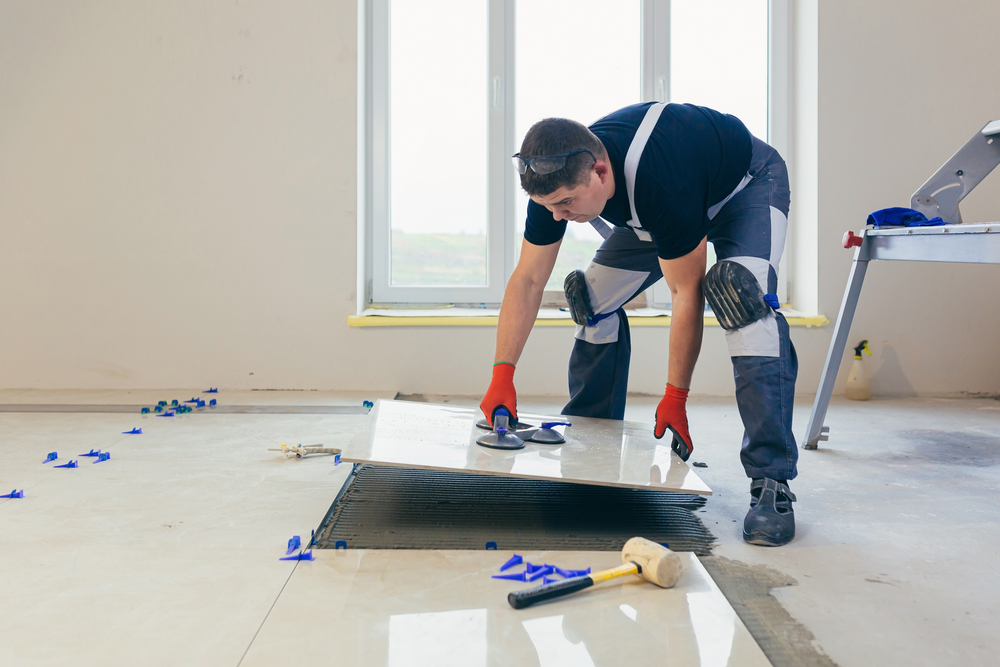May 6, 2024 - Benjamin Ehinger
Attic Insulation Installation: Essential Tips for Energy Efficiency
CALL NOW 844-762-8449
Installing attic insulation is a practical step towards enhancing your home’s energy efficiency and comfort. Elevated energy bills often stem from heat loss in the winter and heat gain in the summer, and your attic is a typical culprit. By properly insulating your attic, you can keep your home more consistently comfortable and possibly reduce your heating and cooling expenses. This project not only locks in desirable temperatures but also mitigates the strain on your HVAC system.
When considering attic insulation installation, it’s crucial to understand the various materials available and which is most suitable for your home. The right insulation choice can depend on numerous factors including your regional climate, the current state of your attic, and your energy savings goals. An understanding of the costs involved and the adherence to building codes is vital for a successful installation. It’s recommended to assess your attic space for any pre-existing issues, such as structural elements that may hinder installation or areas that require sealing prior to adding insulation.
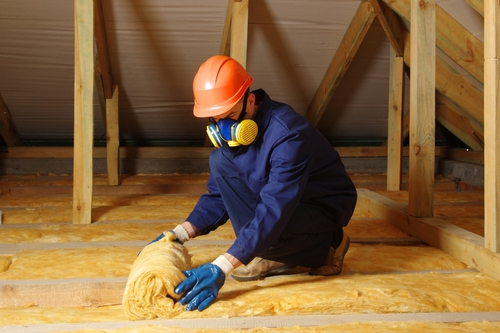 Understanding the correct installation techniques is essential for maximizing the efficiency of your attic insulation. Whether you choose batt or blown-in insulation, each type requires specific steps to ensure optimal performance and durability.
Understanding the correct installation techniques is essential for maximizing the efficiency of your attic insulation. Whether you choose batt or blown-in insulation, each type requires specific steps to ensure optimal performance and durability.
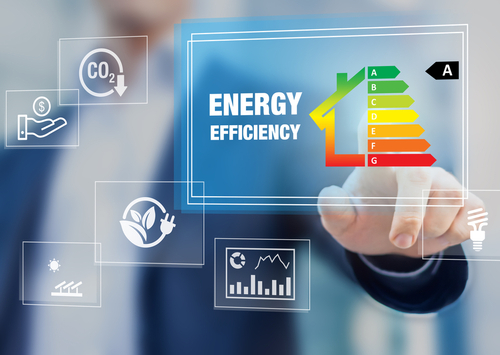 To substantially reduce your energy bills, it’s crucial to address attic insulation, which plays a significant role in minimizing heat loss and boosting your home’s energy efficiency.
To substantially reduce your energy bills, it’s crucial to address attic insulation, which plays a significant role in minimizing heat loss and boosting your home’s energy efficiency.
Remember, prices can be influenced by the current market and might be different at your local store. Always confirm the price and stock level to make an informed decision.
Key Takeaways
- Attic insulation is integral for improving home energy efficiency and comfort.
- Selecting the right insulation material and adhering to building codes are essential.
- A well-insulated attic can lead to lower utility bills and a less strained HVAC system.
Understanding Insulation Fundamentals
Proper attic insulation is crucial for maintaining energy efficiency and comfort in your home. It helps minimize heat loss and enhances thermal performance. The following subsections will guide you through the core components of attic insulation.Defining R-Value
R-Value stands for resistance value, and it is a measure of thermal resistance. The higher the R-value, the better the insulation material can resist heat flow. The recommended R-value for attic insulation varies depending on your climate zone; higher R-values are required in colder regions.Types of Attic Insulation
There are several types of attic insulation, each with unique advantages. Common types include:- Batt Insulation (Batts and Rolls): Composed of fiberglass, mineral wool, or natural fibers and available in precut panels.
- Loose-fill Insulation: Consists of small particles of fiber, foam, or other materials that conform to any space without disturbing structures or finishes.
- Spray Foam Insulation: Applied wet and expands into a thick foam, sealing leaks and adding insulation in one step.
Importance of Sealing Before Insulating
Before insulating, it is essential to ensure your attic is properly sealed. This prevents moisture from entering and reduces potential heat loss. Sealing areas where air might escape, such as around vent pipes or electrical boxes, contributes significantly to your attic’s overall thermal performance.Pre-Installation Preparation
Before installing insulation in your attic, you must conduct a thorough assessment and take necessary safety measures. Proper preparation ensures a safe and effective installation process.Assessing Your Attic Space
Begin by evaluating your attic to determine what type of insulation will suit the space and how much material you will need. Check for any existing insulation and measure its depth. Look for other elements like roof rafters, plumbing, ductwork, and wiring. Ensure these are all in good condition before proceeding and plan how to work around them without causing damage.- Roof Rafters: Identify spacing and depth to calculate the amount of insulation needed.
- Plumbing & Ductwork: Locate to avoid obstruction during insulation.
- Wiring: Check for exposed wiring and potential electrical hazards.
Safety Precautions
Personal Protective Equipment (PPE) is vital to your safety during attic insulation. Always wear a dust mask, gloves, and eye protection to minimize the risk of inhaling particles or irritating your skin and eyes. Clear any debris and ensure you have steady footing to prevent falls. If you encounter any hazardous materials or feel uncertain about electrical wiring, contact a professional before proceeding.- Dust Mask: Essential for filtering out particles.
- Gloves: Protect your hands from irritants and sharp objects.
- Eye Protection: Prevent dust and insulation from harming your eyes.
Installation Techniques
 Understanding the correct installation techniques is essential for maximizing the efficiency of your attic insulation. Whether you choose batt or blown-in insulation, each type requires specific steps to ensure optimal performance and durability.
Understanding the correct installation techniques is essential for maximizing the efficiency of your attic insulation. Whether you choose batt or blown-in insulation, each type requires specific steps to ensure optimal performance and durability.
Installing Batt Insulation
Fiberglass batts are a popular choice for insulation due to their ease of handling and installation. For effective installation:- Begin by measuring your attic space to determine the amount of insulation needed.
- Cut the insulation batts to fit the spaces between the joists, if necessary. It’s imperative to cut the material accurately to maintain the insulation’s integrity and effectiveness.
- Place the batts between the joists, ensuring they fit snugly, with the paper or foil vapor barrier facing the heated area below. Avoid compressing the insulation, as this can reduce its R-value.
Installing Blown-In Insulation
Blown-in insulation, such as cellulose or loose-fill fiberglass, provides a more seamless coverage and is ideal for irregularly shaped attics or areas with numerous obstructions.- Rent an insulation blower machine, which is commonly available at home improvement stores.
- Use the machine to fill the attic to the desired depth evenly, paying close attention to fill all nooks and crannies. The ENERGY STAR website mentions that most attics should be insulated to R-38.
- Be mindful of not blocking any vents or air circulation features in your attic during the process.
Material Selection
Choosing the right insulation material for your attic is critical for energy efficiency, cost-effectiveness, and ease of installation. Your selection will have a long-term impact on your home’s thermal performance.Comparing Fiberglass, Cellulose, and Other Materials
Fiberglass Batts: Fiberglass is a popular choice for attic insulation due to its ease of installation and cost-efficiency. Fiberglass batts come in standard sizes that are designed to fit between wall studs and ceiling joists. They offer a good R-value, which measures thermal resistance, making them an effective barrier against heat transfer.- Pros: Non-flammable; resistant to moisture damage; easy to install for DIY projects.
- Cons: Protective gear needed during installation due to possible skin and lung irritation.
- Pros: Superior in sealing air leaks; consists of up to 85% recycled material; can be more effective than fiberglass in certain scenarios.
- Cons: May settle over time, reducing its effective R-value; requires a professional for blown-in installation.
- Pros: Materials like rigid foam boards offer high insulation value per inch; spray foam provides an air seal in addition to insulation.
- Cons: Typically more expensive and may require professional installation.
Maximizing Energy Savings
 To substantially reduce your energy bills, it’s crucial to address attic insulation, which plays a significant role in minimizing heat loss and boosting your home’s energy efficiency.
To substantially reduce your energy bills, it’s crucial to address attic insulation, which plays a significant role in minimizing heat loss and boosting your home’s energy efficiency.
Addressing Heat Loss
Heat loss through the attic can be a major contributor to high energy bills, particularly during colder months. To tackle this, ensure your attic is properly sealed. Air sealing gaps and cracks prevents warm air from escaping, which is essential before adding new insulation. A well-sealed attic can save an average of 15% on heating and cooling costs.Optimizing Thermal Performance
When it comes to insulation, not all materials are created equal. Selecting the right R-value is key to optimizing thermal performance. For instance, adding loose fill on top of fiberglass batts can enhance energy efficiency. Additionally, upgrading attic insulation can lead to approximately a 15% savings on heating and cooling costs. Remember, quality insulation doesn’t only retain heat but also keeps your home cooler in the summer, contributing to year-round energy savings.Understanding Installation Costs
When considering attic insulation, it’s crucial to understand both the immediate costs of installation and the long-term savings on your energy bills. Here’s what you need to know.Cost Factors
The cost of attic insulation varies based on several key factors:- Attic Size: Larger attics require more materials and possibly more labor.
- Insulation Type: Options like fiberglass, cellulose, or foam have different prices.
- Installation Challenges: Difficult access or the need for additional repairs can increase costs.
Evaluating Long-Term Savings
Investing in attic insulation can lead to significant savings on your energy bills. Proper insulation keeps your home warmer in the winter and cooler in the summer, reducing the need for heating and cooling.- Energy Efficiency: Insulation can significantly reduce heat loss and gain in your home.
- Cost Reduction: Expect to see a decrease in your energy bills, with savings depending on your climate and the quality of installation.
Compliance With Building Codes
When installing attic insulation, ensuring compliance with relevant building codes is crucial for both safety and legality. Your project must adhere to standards that dictate materials, methods, and energy efficiency.Navigating Local Regulations
Local regulations can vary significantly, so it’s essential to understand the specific building codes applicable to your area. These regulations often detail the required R-values for insulation based on your climate zone, as well as the necessary specifications for achieving an air-tight building envelope. For instance, the International Energy Conservation Code (IECC) stipulates different criteria for various components, including ceilings and ducts outside conditioned spaces, which you can find in their residential codes and standards section. Obtaining the proper permits before you begin is also part of the compliance process. This usually involves submitting your construction plans to local building authorities, who will review them for adherence to the current codes. Once approved, regular inspections might be required to ensure ongoing compliance throughout the installation process. Remember, non-compliance can result in significant fines and require you to redo parts or all of your project, so thorough research and adherence to codes is vital for a successful insulation project.Dealing With Structural Elements
When insulating your attic, you must navigate around structural elements such as roof rafters, pipes, and ductwork while ensuring proper attic ventilation.Insulating Around Pipes and Ductwork
Encountering pipes and ductwork is a common obstacle during attic insulation. It’s key to insulate these components without compromising their functionality or causing damage. For pipes, it’s necessary to leave space between the insulation and the pipe to prevent freezing, which can be achieved by using foam or fiberglass batt insulation that can be cut and fitted around the pipes. Ductwork requires special attention because poor insulation can lead to condensation and heat loss. Wrap ducts with insulation, securing it with duct tape, and consider using higher R-value material to minimize energy loss.Attic Ventilation Considerations
Your attic’s ventilation is crucial for preventing moisture buildup and regulating temperature. Soffit vents, which are located under the eaves of your roof, allow fresh air to enter the attic. When adding insulation, ensure it doesn’t block these vents. A common method is to install rafter vents or dams. They are placed between roof rafters to keep a clear passageway for air from soffit vents to the attic. This is essential in maintaining the efficacy of your insulation and the longevity of your roof structure.Selecting Insulation Products
When planning to insulate your attic, you should carefully consider which insulation products to purchase. Factors like availability, specific pricing, and inventory levels at your local stores are critical to ensure your project proceeds smoothly.Product Availability and Pricing
Insulation products come in various types—fiberglass batts, loose-fill, foam board, and more. You’ll find these options at major retailers like Home Depot, where pricing and availability can vary. Staying informed about local store prices helps you secure materials cost-effectively. Inventory levels at stores like Home Depot fluctuate based on demand and supply chain factors. Before visiting, check online or call to confirm that the needed insulation type and quantity are in stock. Planning your purchase during sales or promotions can lead to substantial savings. When comparing products, pay attention to their R-value—a measure of thermal resistance. For instance, higher R-value insulation is recommended for colder climates to maintain energy efficiency. Research attic insulation R-values suggested for your region and find products that meet or exceed those levels.| Insulation Type | Price Range at Home Depot | Availability |
|---|---|---|
| Fiberglass Batts | $0.30 – $0.80 per sq. ft. | Widely available |
| Loose-fill | $0.40 – $0.60 per sq. ft. | Subject to stock |
| Foam Board | $0.70 – $1.10 per sq. ft. | Limited stock |
Utilizing Retail Websites
When preparing to insulate your attic, retail websites provide a convenient platform to purchase materials. It’s crucial to navigate these websites effectively to ensure you get the best products for your needs.Online Shopping Tips
1. Research Products Thoroughly: Before making a purchase from retailers like Home Depot, read product descriptions carefully. Look for the R-value, which is a measure of thermal resistance, and choose the insulation that fits your climate and attic requirements.- Check Reviews: Scan customer reviews for feedback on the insulation’s performance and ease of installation.
- Compare Prices: Don’t just buy the first insulation you find; use the website’s comparison tool to ensure you’re getting the best deal.
- Returns and Exchanges: Be clear on how to return or exchange products if they don’t meet your expectations or are defective.
- Customer Support: Use live chat or customer hotline options if you need help navigating the website or require additional information about attic insulation products.
Frequently Asked Questions
When it comes to attic insulation installation, knowing the details can help you make informed decisions for your home. This section answers key questions to guide you through the process.What is the average cost of installing attic insulation?
Attic insulation installation can start at $1.50 per square foot, with prices ranging up to $2.45 per square foot. Your total cost will depend on factors like the type of insulation and the complexity of your attic space.How do I determine the right amount of attic insulation for my home?
The correct amount of insulation for your attic is determined by the R-Value recommended for your area. This value is a measure of resistance to heat flow. Most attics should reach an R-Value equivalent to R-38, which may be around 10 to 14 inches of insulation material, depending on the type used.Can attic insulation improve my home’s energy efficiency?
Yes, properly installed attic insulation can significantly improve your home’s energy efficiency. It can reduce the workload on your heating and cooling systems, lessening energy waste and potentially lowering utility bills. Energy Star notes that attics with low insulation levels can lead to excessive energy consumption and discomfort in extreme temperatures.What are the different types of attic insulation available?
There are several types of attic insulation available, including fiberglass, cellulose, spray foam, and mineral wool. Each type has its own properties and benefits, with blown-in insulation being a common choice for its ease of installation in attics with irregular shapes or numerous obstructions.Are there specific considerations when installing insulation in an attic?
When installing insulation in an attic, you must consider ventilation, moisture control, and the sealing of air leaks. It’s crucial to ensure that insulation does not block soffit vents and that there is a vapor barrier in place if needed. Opting for a professional installation can ensure that these factors are properly addressed.How long does attic insulation installation typically take?
The duration of attic insulation installation can vary based on the size of the attic, the type of insulation used, and the installation method. A professional installation might take anywhere from a few hours to a full day. It’s important to get a time estimate from your installation provider for a clearer schedule.RECENT BLOGS
Our Reviews
Glenda Lanier Prowell
1721758635
I have ordered an 11 yard dumpster to be delivered to my house.Lonier was extremely helpful and answered all my questions. The rate was very reasonable.
Cedric Smikle
1721660395
Amber was extremely professional and courteous. She answered all of my questions and even some that I didn’t know I needed to ask.
Cait Kaider
1721243051
I highly recommend Waste Removal USA for their responsiveness and how the staff work hard to provide exceptional customer service. They have done well by us and our clients. Thank you!
Easom Family
1721223306
Louiner Pierre-Louis Is awesome! Did a great job. Will definitely be using this same company for all my dumpster needs because of his awesome customer service! Thank you!!!
tabitha Vazquez
1720539988
Wonderful and fast customer service!
LATEST BLOGS

